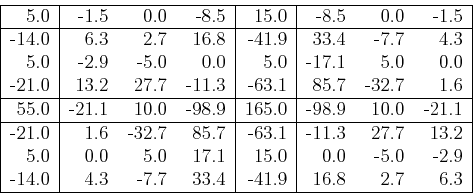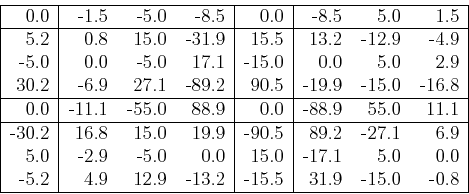Consider an N-point 1D DFT first. Centralization of the 1D spectrum is the
same as a shift of the spectrum ![]() by
by ![]() points to either left or
right (as
points to either left or
right (as ![]() is periodic, the direction of shift does not matter):
is periodic, the direction of shift does not matter):
which can be directly obtained from the time signal
![$\displaystyle \sum_{n=0}^{N-1}X[n-\nu]e^{j2\pi mn/N}
=\sum_{n'=0}^{N-1}X[n']e^{j2\pi (n'+\nu)m/N}$](img317.png) |
|||
![$\displaystyle \sum_{n'=0}^{N-1}X[n']e^{j2\pi n'm/N}e^{j\pi \nu}=x[m]e^{j2\pi m\nu/N}$](img318.png) |
Here we have assumed
If we change the sign of every other time sample, the corresponding Fourier spectrum will be centralized with DC component in the middle of the 1D array.
Consider the DFT of an ![]() 2D array of spatial samples also has the
space shift property:
2D array of spatial samples also has the
space shift property:
In other words, if we change the sign of any spatial sample point
![\begin{displaymath}
\left[ \begin{array}{rrrr}
x[0,0] & -x[0,1] & x[0,2] & \cd...
...ots \\
\vdots & \vdots & \vdots & \ddots \end{array} \right] \end{displaymath}](img324.png)
then the resulting 2D Fourier spectrum will be centralized with DC component in the middle and high frequency components around the four edges. For the example above, the real part of the centralized spectrum becomes

and the imaginary part is:
